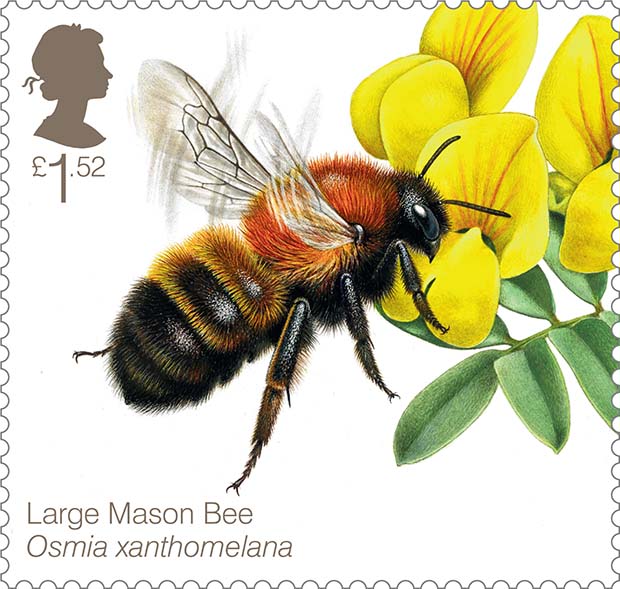To determine the exposure of native bees to pesticides, bees were collected from an existing research area in northeastern Colorado in both grasslands (2013–2014) and wheat fields (2014). Traps were deployed bi-monthly during the summer at each land cover type and all bees, regardless of species, were composited as whole samples and analyzed for 136 current-use pesticides and degradates. This reconnaissance approach provides a sampling of all species and represents overall pesticide exposure (internal and external). Nineteen pesticides and degradates were detected in 54 composite samples collected. Compounds detected in > 2% of the samples included: insecticides thiamethoxam (46%), bifenthrin (28%), clothianidin (24%), chlorpyrifos (17%), imidacloprid (13%), fipronil desulfinyl (7%; degradate); fungicides azoxystrobin (17%), pyraclostrobin (11%), fluxapyroxad (9%), and propiconazole (9%); herbicides atrazine (19%) and metolachlor (9%). Concentrations ranged from 1 to 310 ng/g for individual pesticides. Pesticides were detected in samples collected from both grasslands and wheat fields; the location of the sample and the surrounding land cover at the 1000 m radius influenced the pesticides detected but because of a small number of temporally comparable samples, correlations between pesticide concentration and land cover were not significant. The results show native bees collected in an agricultural landscape are exposed to multiple pesticides.
Source:
M.L. Hladik et al. / Science of the Total Environment 542 (2016) 469–477

- Login om te reageren
